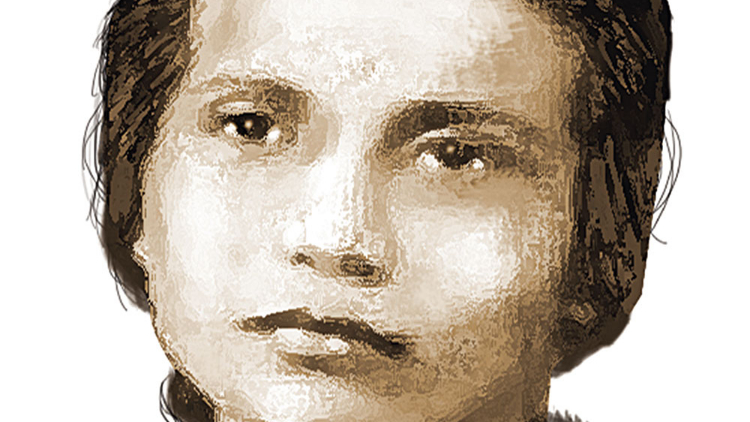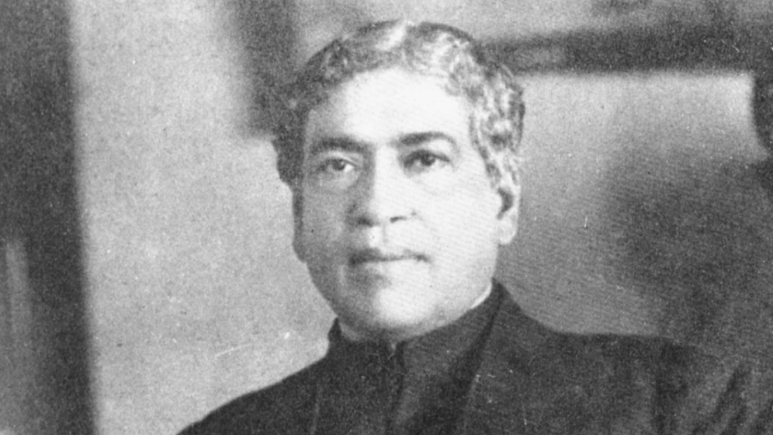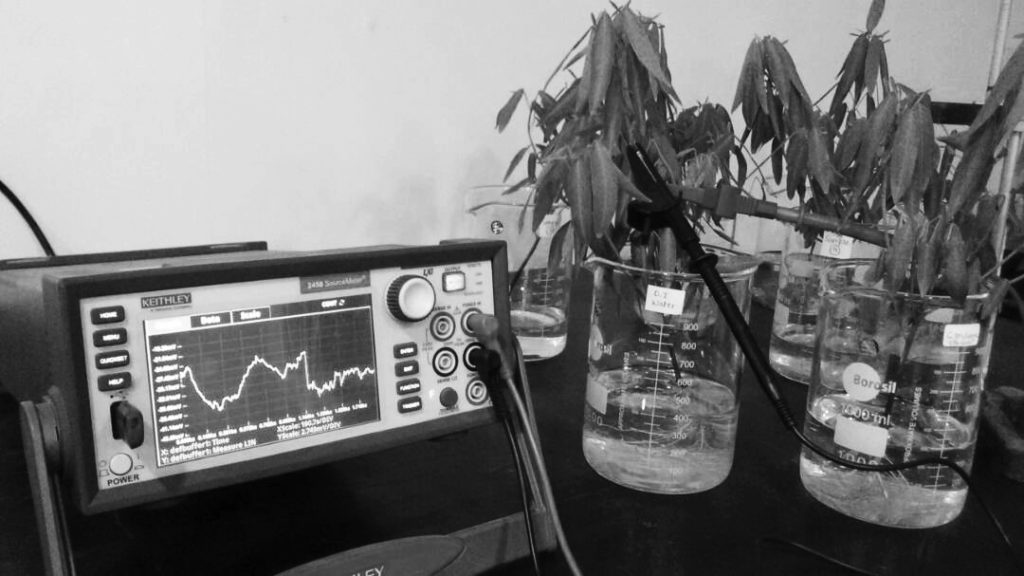Monthly Archives: November 2018
30 b
30 a
30
The woman who could have won a Nobel
Despite being a pioneer in the study of cosmic rays in India, Bibha Chowdhuri remains practically unknown.

Illustration by Suman Choudhury
Judging by her publications in journals such as Nature and Proceedings of the Physical Society of London, and her doctoral research work at the laboratory of renowned physicist P.M.S. Blackett in the UK, Bibha Chowdhuri was a gifted physicist. No wonder she was one of the young scientists — the first woman researcher — selected by Homi J. Bhabha to join the newly established Tata Institute of Fundamental Research (TIFR), Bombay, in 1949. Chowdhuri (1913-1991) served in renowned institutions of the country and was a tireless researcher till she died, unsung and unheralded, in Calcutta. No national award or fellowship of any major scientific society came her way. She does not figure among the 98 scientists of uneven quality in the 2008 book Lilavati’s Daughters: The Women Scientists of India, edited by Rohini Godbole and Ram Ramaswamy and published by the Indian Academy of Sciences, Bangalore.
Now, thanks to the painstaking efforts of two physicists, a book has been published from Germany that throws light on the life and work of this remarkable scientist who happened to be a woman. Rajinder Singh, a noted science historian at the University of Oldenburg in Germany and Suprakash C. Roy, former professor of Physics at the Bose Institute in Calcutta seek to unravel the “story of courage and determination of a lady born more than a hundred years ago …for our younger generations to emulate.”
While her research contributions are well recorded and have been critically examined by the authors, not much material could be unearthed on her life. Chowdhuri was wedded to physics and led a quiet, modest and dignified life largely within the confines of her laboratory. A quintessential researcher who never aspired for high office, she hailed from an educated zamindar family in the Hooghly district of undivided Bengal and her mother was related through marriage to the family of Sir J.C. Bose. Chowdhuri was one of six siblings — five sisters and a brother. All of them were well-educated, thanks to their Brahmo lineage, and none of them married.
Chowdhuri obtained her MSc in Physics from Calcutta University in 1936 — the only woman in that batch — and plunged headlong into research, mostly at the Bose Institute. Debendra Mohan (DM) Bose [nephew of Sir J.C. Bose] and Chowdhuri published three consecutive papers in Nature, but could not continue further investigation on account of “non-availability of more sensitive emulsion plates during the war years. Seven years after this discovery of mesons by DM Bose and Bibha Chowdhuri, C.F. Powell made the same discovery of pions and muons and further decay of muons to electrons… using the same technique” and won the Nobel Prize in 1950. Powell acknowledged Bose and Chowdhuri’s pioneering contribution in his work.
In 1945, Chowdhuri joined “the cosmic ray laboratory of would-be Nobel Laureate P.M.S. Blackett (he was awarded the Nobel Prize in 1948) at a time when studies on extensive air showers in cosmic rays were one of the most important investigations in particle physics” for her PhD.
On her return, she joined TIFR. After eight years, she joined the Physical Research Laboratory (PRL) at Ahmedabad. She was involved deeply with the Kolar Gold Mine experiment and discussed with Vikram Sarabhai, then director of PRL, about her future research plans. Unfortunately, after Sarabhai’s untimely death, she was not permitted to take up the planned work. It is unfortunate that at two critical junctures, once at the Bose Institute and later in PRL, she had to abandon the work she intended to pursue. She finally opted for voluntary retirement, moved to Calcutta to pursue her work on high energy Physics, continued as an active researcher with the Saha Institute of Nuclear Physics and the Indian Association for the Cultivation of Science and kept publishing her findings till almost the time of her death.
While Chowdhuri’s research in the fields of high energy and cosmic ray physics has been extensively reviewed and rated as “superb” by the authors, her life, devoid of any major recognition, raises many important questions, especially in the context of barriers women face even today, while pursuing science.
Just like C.V. Raman was reluctant to admit the first woman researcher to the Indian Institute of Science in Bangalore, DM Bose too was initially not enthusiastic but eventually accepted Chowdhuri as a research student. The situation was not much different in the West.
In her introduction to the book Women and Science in India: A Reader,a collection of interesting essays, Neelam Kumar states that “science continues to be characterised by low number of females, clustered in disciplines considered feminine and confined to the ranks of invisible, poorly paid assistants, and other lower positions.” In the same volume, Namrata Gupta and A.K. Sharma write about the “triple burden” —- In addition to the double burden of career and home, the long hours in the laboratory demanded by scientific study and research constitutes the third burden — faced by women in science. The issue of “passive discrimination” and of invisible barriers are also no less important.
The authors of the book on Chowdhuri cite Godbole and Ramaswamy that till a few years back only five per cent of the fellows of the Indian National Science Academy were women. Eileen Pollack, author of The Only Women in the Room: Why Science is still a Boys’ Club, argues that society encourages men to take up science and discourages women. In an interview to The Manchester Herald during her research days, Chowdhuri had said, “Women are terrified of Physics — that is the trouble. It is a tragedy that we have so few women physicists today… I can count the women physicists I know, both in India and England, on the fingers of one hand. At school, scientifically-inclined girls choose Chemistry; perhaps because a really sound grasp of Higher Mathematics is one essential of any physicist’s equipment.”
Singh and Roy deserve praise for having written a scholarly and dispassionate analysis of what Chowdhuri achieved. One hopes that the book would lead to more material on Chowdhuri emerging from her students who may still be alive. It may also prompt the government to take due cognisance of Chowdhuri’s life and honour her memory as a way of expiating our collective apathy towards her.
A Jewel Unearthed: Bibha Chowdhuri by Rajinder Singh and Suprakash C. Roy was released by German publishing house Shaker Verlag recently
source: http://www.telegraphindia.com / The Telegraph,Online edition / Home> Science / by Amitabha Bhattacharya / November 25th, 2018
28 b
A tribute to Jagadish Bose, who proved plants have life
Group of scientists recreates Bose’s experiment, which was not received well 100 years ago

Image: The Telegraph
More than 100 years after Jagadish Chandra Bose conducted the experiment that established plants have life, a group of scientists in Calcutta came together this year to repeat it.
Supriyo Kumar Das, an assistant professor of Geology at Presidency University, led the initiative. The others on the team were also from Presidency — Debashis Datta and Rabindranath Gayen, both assistant professors of Physics, Snigddha Pal Chowdhury, a research associate in the Geology department, Abhijit Dey, an assistant professor of Botany, and Saranya Naskar, an MSc student of Physics.
Bose, who had joined Presidency College in 1885 as a professor in the Physics department, had conducted the experiment in a laboratory on these very precincts. No matter how much he is hailed today for his scientific genius, in his time Bose’s experiment had not been received well.
It all began when Peter V. Minorsky, a botanist and professor at Mercy College in the US, got in touch with Das earlier this year. Minorsky wanted to know about the groundwater composition in the College Street area, where Presidency University stands.
Says Das, “It is from him that I heard about the prejudices against Bose. In the course of our exchanges, I got interested and emotionally involved with Bose’s work.”
He had been savagely criticised by George James Peirce, professor of Plant Physiology at Stanford University. Peirce wrote in the journal, Science, in 1927: “The trouble with Bose… is that while his curiosity is directed to biological phenomena, his mind is inadequately equipped with the information and habits necessary for accurate study, and his reflections are addressed to philosophical problems.”
In 1929, the Indian Review reported that G.A. Perrson, who was from the US, was unable to find pulse in plants. And years later, in the mid-1960s, in the Handbuch der Pflanzenphysiologie (Encyclopaedia of Plant Physiology), it was said, “Unfortunately Bose’s theoretical views and his emotional style of reporting have generated what may be an excessive skepticism concerning the validity of his observations.”
This is what Bose had observed. By devising a wire electrode — an invention three decades ahead of its time — he identified a pulsating layer of cells abutting the vascular tissue in plants. In an email to The Telegraph, Minorsky says, “In the last few years, plant biologists have come to recognise this layer is the site of propagating waves of calcium release that are involved in communicating stress from local points of occurrence to the rest of the plant. The discovery of this calcium wave is one of the more exciting discoveries of the 21st century, and Bose’s ‘plant heart’ predates this discovery by a century.”
Bose has left notes aplenty about every aspect of his historic experiment. One of the lone omissions is the kind of water used. Says Das, “Being a geochemist and scientist, I understand the composition of groundwater and the effect of chemical stress of sodium on plants. I also know that the composition of water varies from place to place.” He adds, “It occurred to us that Bose’s peers in the West might not have got the same results as him because of the water used.”

Image: The Telegraph
In Bose’s time, water was supplied to the Presidency campus from Palta in the Barrackpore area. Das points to a spot occupied by an elevator on the ground floor of Baker Building that houses the Physics department and says, “This is where the old pipeline ran.” Currently, the municipality takes care of the water supply. It comes from the Tala tank in north Calcutta.
When Das and and others repeated the experiment, they decided to use water from every possible source Bose might have accessed. “He could have also used water from the Ganges or from the pond in College Square,” says Das.
Datta explains, “We wanted to check the potassium and sodium concentration. Electricity flows through water only when there are some ions present in it. Possibly, the scientists from the West had not used ionised water.”
The “repeaters” used for the experiment the plant Bose had used — the Desmodium motorium, locally known as bon charal. Minorsky explains, “The lateral leaflets of Desmodium are unique in the plant kingdom for their pronounced and unprovoked oscillatory movements. If conditions are optimal, one can watch these lateral leaflets move at a pace slightly slower than the second hand of a watch.”
According to Minorsky, Bose enjoyed certain enormous advantages over his Western peers. First, Desmodium motorium is a native of Bengal, so he had access to an ample supply of healthy, thriving specimens. In contrast, in the West its cultivation was restricted to glasshouses. Those days, glasshouses were often heated by wheelbarrows of burning coal. These released a gas called ethylene, which in turn affected many plant processes, including a decrease in overall excitability. Second, he points out Calcutta’s temperatures and how they lend themselves to plant study. “Temperatures of 30-35° Celsius, which occur commonly, are optimal for studying plant movements and excitability. The temperatures at which scientists in the West studied plants would have been much lower,” he says. Finally, there was the salty water advantage.
Dey arranged for 21 Desmodium plants. Each was kept in a beaker full of a distinct water sample. Thereafter, they were all kept in a controlled atmosphere. Says Gayen, “We placed them in glass beakers and left them in the laboratory, where all the lights would be kept on so that all of them were exposed to the same amount of light. The air conditioner would be set at a particular temperature to control the humidity. We would connect the probes to two different parts of the stem. The source meter was used to read the fluctuating signals.”
The brainstorming went on for months and the experiment lasted a fortnight. Das says, “The apprehension of failure was there. But the moment when we got the first response was exquisite. The horizontal line that appeared on the screen formed a peak and then fell only to rise again. Though our graph did not have peaks and troughs as tall as Bose’s, we definitely had got a graph that roughly replicated the ECG graph of humans.”
source: http://www.telegraphindia.com / The Telegraph,Online edition / Home> Culture / by Moumita Chaudhuri / November 25th, 2018